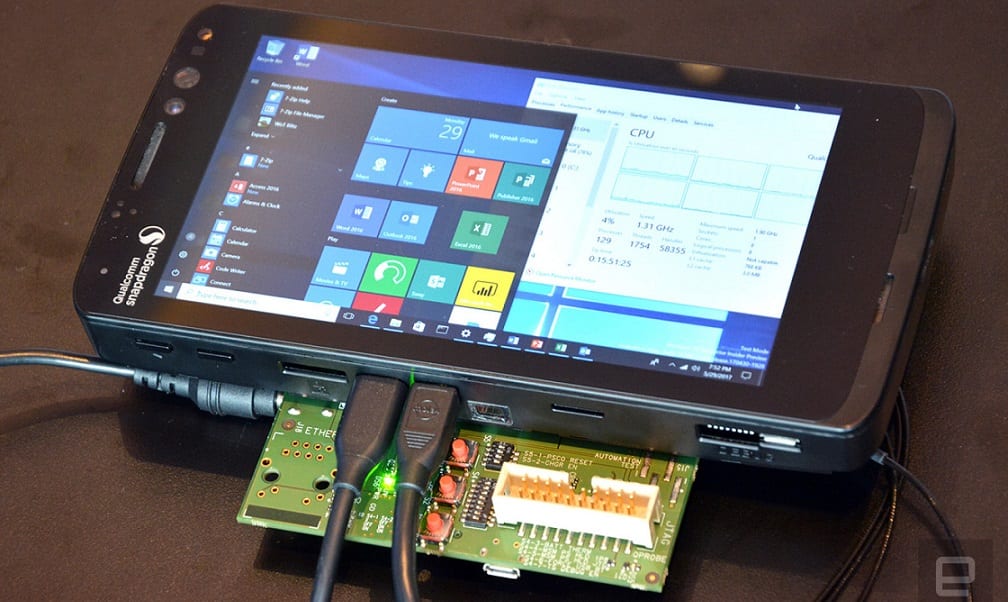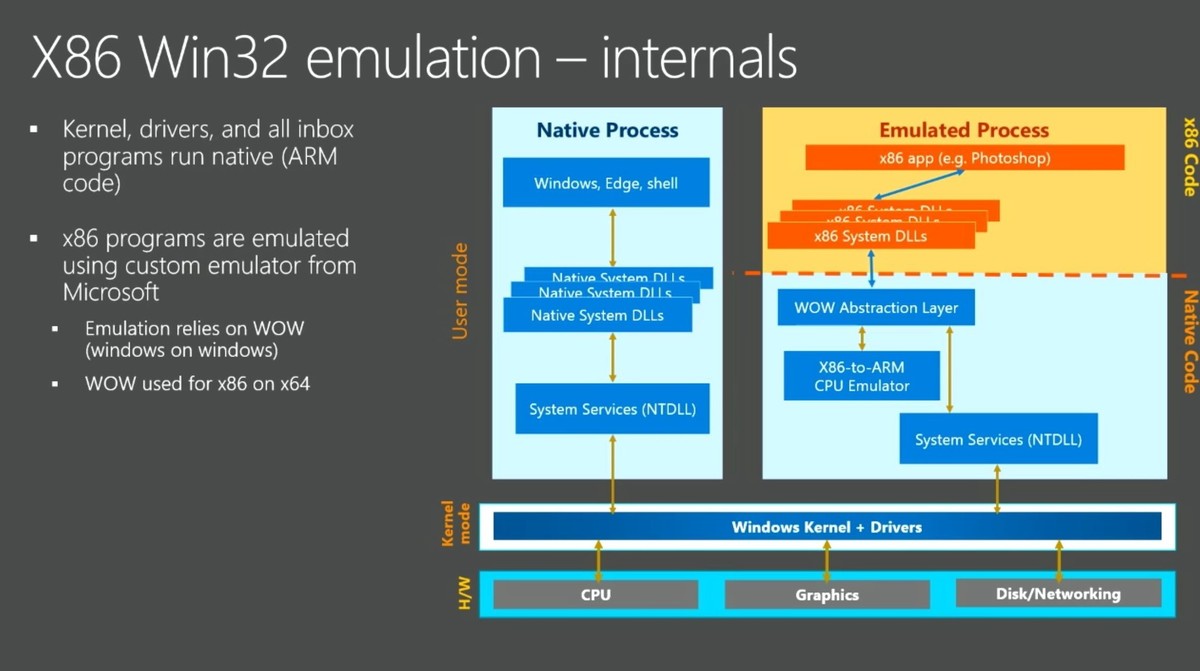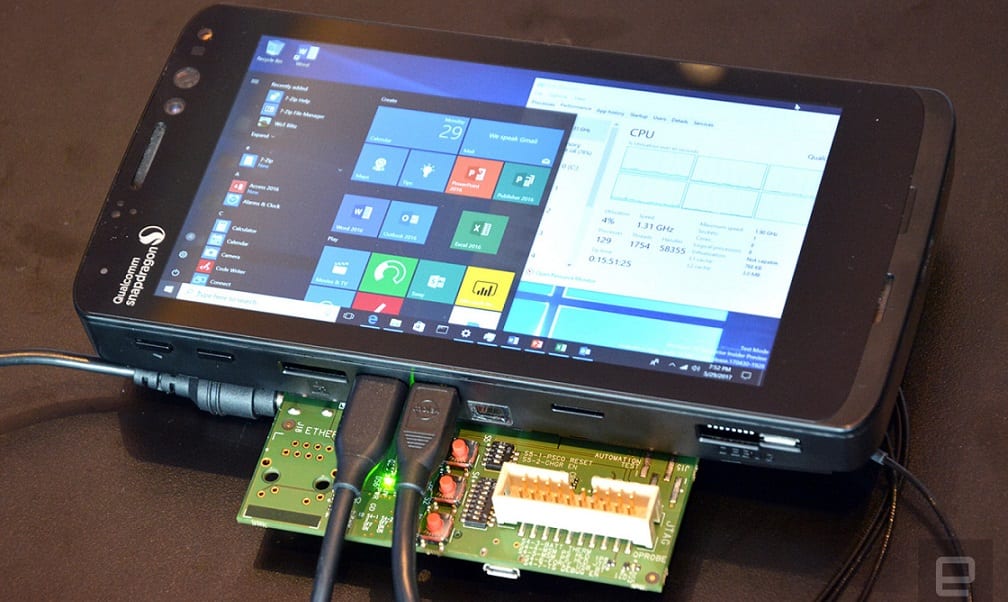
Despite the setback of Windows RT for ARM, Microsoft persisted in integrating its ubiquitous PC operating system onto RISC (reduced instruction set computers) devices. With the introduction of Windows 10 on ARM, the Redmond-based software giant aims to establish a presence in a market primarily dominated by Google and Apple, through Android and iOS respectively. If considering acquiring a Snapdragon 835-powered Windows 10 laptop, here’s what to consider:
What is Windows 10 on ARM (Version 2.0)?
Contemplating Windows 10 on ARM devices evokes memories of the Windows RT era, an unequivocal failure. However, the distinctions between them are stark. Unlike Windows RT, Windows 10 on ARM enables the execution of traditional desktop software and permits developers to compile their programs for ARM processors. Consequently, both developers and consumers shunned Windows RT, leading to its swift demise.
Windows 10 on ARM promises a distinctive experience. Users enjoy the full desktop experience, facilitated by a specialized emulator layer enabling 32-bit desktop applications to run on ARM processors. This emulation leverages WOW (Windows on Windows) technology, the same used for 32-bit apps on 64-bit Windows, yet tailored for x86-to-ARM transition, solely via software.
Emulation is central to Windows 10 for ARM, activating exclusively for traditional Windows x86 programs. Underneath, the software core, encompassing the Windows kernel, hardware drivers, and bundled programs, operates in native ARM code, alongside all Universal Windows Platform (UWP) apps featured on the Windows Store.
Does Windows 10 on ARM Offer a Unique Experience Compared to x86-64?
Despite Microsoft’s optimistic portrayal of the Windows experience on ARM, consider a few caveats. Initially, Snapdragon-based Windows devices might lack full peripheral hardware support due to incompatible drivers written for the Intel X86 platform. Vendors must supply new drivers for seamless functionality on ARM hardware.
Windows 10 on ARM devices will ship with Windows 10 S, a version with a limited feature set that solely supports software from the official Windows Store. Attempting to install non-Windows-Store software triggers a message stating, “For security and performance, Windows 10 S only runs verified apps from the Store”. Nonetheless, traditional Windows programs can be installed on Windows S devices with ease, a topic we’ll explore further in the next segment.
Windows 10 S provides some features of Windows 10 Pro, such as BitLocker encryption and Hyper-V virtualization, but lacks access to command line environments and tools, meaning no Command Prompt (CMD) or PowerShell. Additionally, it excludes WSL (Windows Subsystem for Linux), preventing installation of the Bash shell for Linux environments like Ubuntu, openSUSE, or Fedora.
Installing Traditional Desktop Apps on ARM-based Windows 10 Devices
Short answer? Yes, but with caveats. Traditional desktop apps are installable on ARM-based Windows 10 devices, but they must be 32-bit and kernel mode driver-free. Windows 10 S devices, regardless of processor (Intel, AMD, ARM), restrict installations to the Windows Store.

Don’t let that dissuade you from opting for a Windows S computer. Any device running Windows 10 S can be upgraded to Windows 10 Pro. This upgrade enables you to install traditional desktop programs and access all advanced Windows features found in standard-issue Windows laptops powered by Intel or AMD chips. Microsoft currently offers this upgrade for free, but keep in mind that the ‘Free Upgrade’ offer expires in September 2018.
ARM-based Laptops Running Windows 10
Microsoft partnered with traditional Windows OEMs to introduce Snapdragon-powered PCs to the market. Asus NovaGo is set to be the first such device available, followed by HP Envy x2 and an unnamed device from Lenovo. While other manufacturers may join if the experiment succeeds, a surge of new ARM-based laptops isn’t imminent.
Specs and Performance
The Asus NovaGo TP370 boasts a 13.3” Full HD (1920 x 1080) LTPS “NanoEdge” display offering 10-point multi-touch and stylus support via the Asus Pen with 1024 levels of pressure sensitivity. Powered by the Snapdragon 835 SoC, it integrates an ARM-based 64-bit CPU and an Adreno 540 GPU. The application processor features eight Kryo 280 cores clocked at up to 2.45 GHz, while the graphics processor runs at 710 MHz.
Up to 8GB of RAM and 256 GB of UFS 2.0 flash storage are available, rated at up to 175 MB/s or 4000 Mbps. More affordable models will have 4GB / 6GB of RAM and 64GB / 128GB of storage. The NovaGo will feature four antennas, supporting Gigabit LTE (1 Gbps downlink, 150 Mbps uplink), and dual-band 802.11ac MU-MIMO Wi-Fi. Additionally, it will include a Nano SIM slot or eSIM (embedded SIM) for the ‘Always-on’ feature.
Specs for the HP Envy x2 remain officially undisclosed, but a leaked screenshot purportedly from HP’s website suggests key details. The laptop is anticipated in at least two variants: one with 4GB RAM and 128GB UFS storage, and another with 8GB RAM and 256GB UFS storage. Both models feature 1920 x 1280 displays. Despite the device now being listed on HP’s site, precise specifications remain elusive.
We’ll inform you of the performance benchmarks upon receiving the machines. Currently, the only information available suggests users may expect 20+ hours of battery life from these devices. However, given that this claim originates from Qualcomm and its OEM partners, we’ll reserve judgment until verifying it firsthand.
Price and Availability
While Asus laptops may become available in the coming weeks, HP and Lenovo are expected to launch their offerings early next year. The Asus device will be priced between $599 to $799, while the pricing of the other devices is yet to be announced. However, leaked information suggests that HP may price its devices below $200, although this seems unlikely despite originating from HP’s official website. Qualcomm has stated that Snapdragon-powered laptops will be priced between $400 – $700, indicating that these first-generation ‘Windows 10 on ARM’ devices will likely fall within the same price range.
Windows 10 on ARM: Benefiting Qualcomm and Microsoft
Qualcomm aims to challenge Intel in the enterprise arena, but even if Windows on ARM succeeds, ARM servers may still be beyond reach due to the performance gap between Qualcomm’s chips and Intel’s. Nonetheless, with mobile driving the semiconductor industry, Microsoft urgently needs a foothold in this segment and fervently desires its success.

Pritam Chopra is a seasoned IT professional and a passionate blogger hailing from the dynamic realm of technology. With an insatiable curiosity for all things tech-related, Pritam has dedicated himself to exploring and unraveling the intricacies of the digital world.



